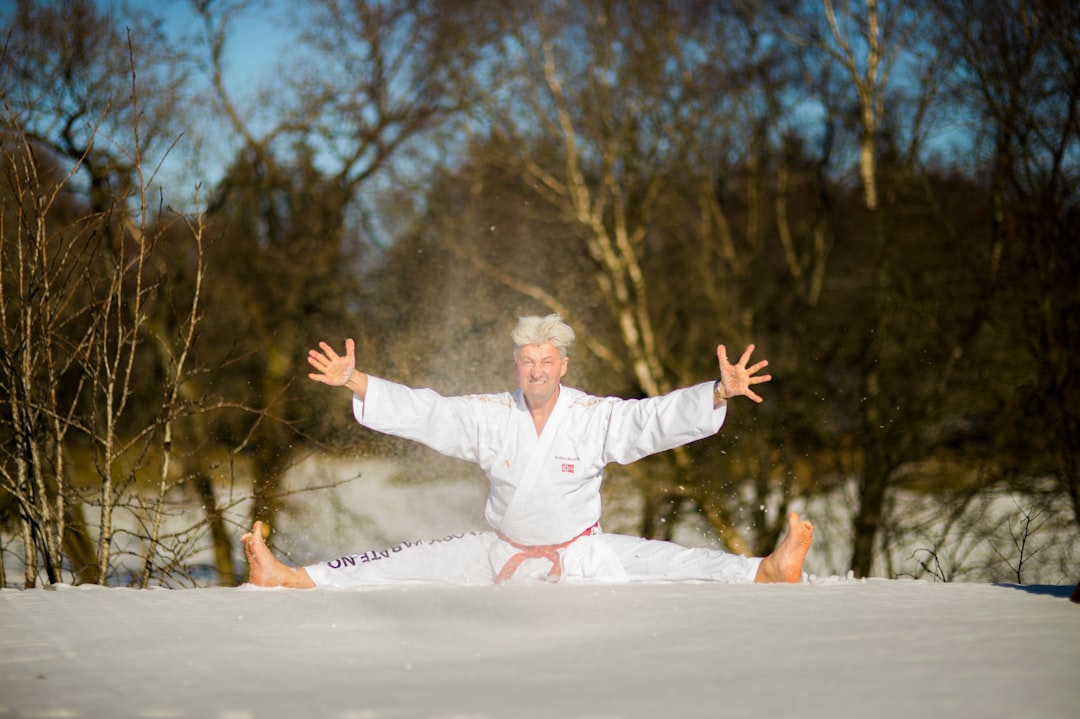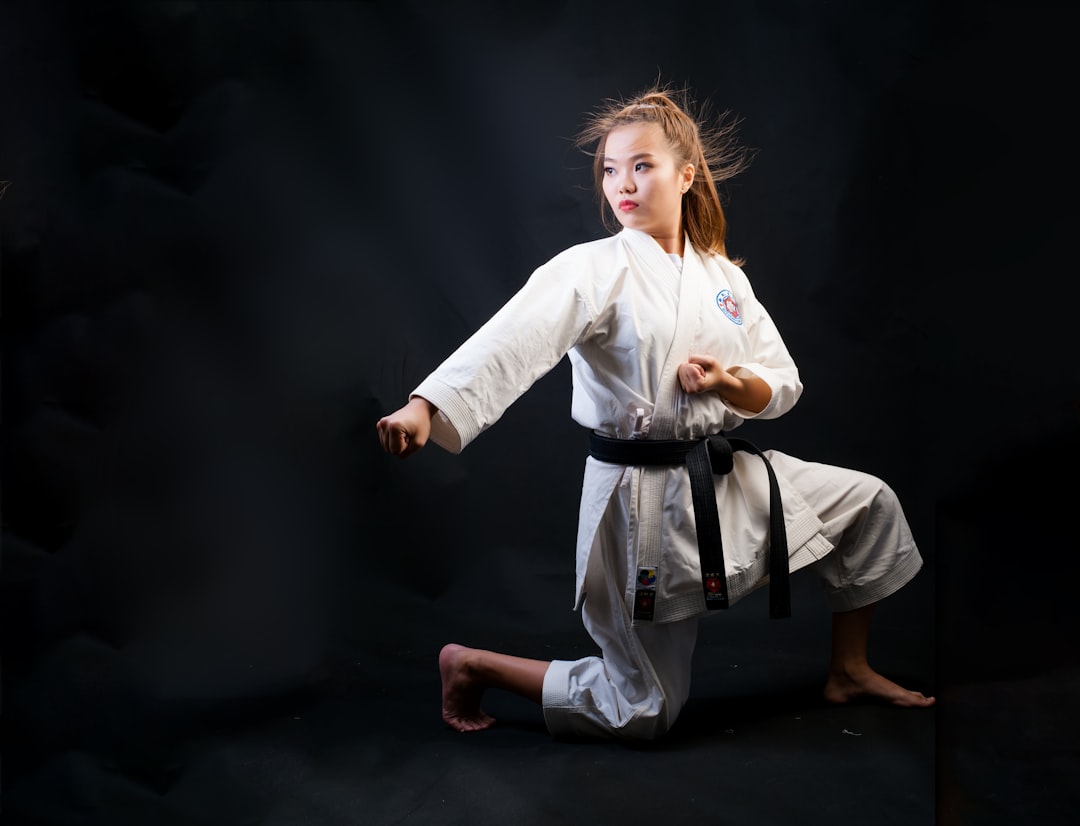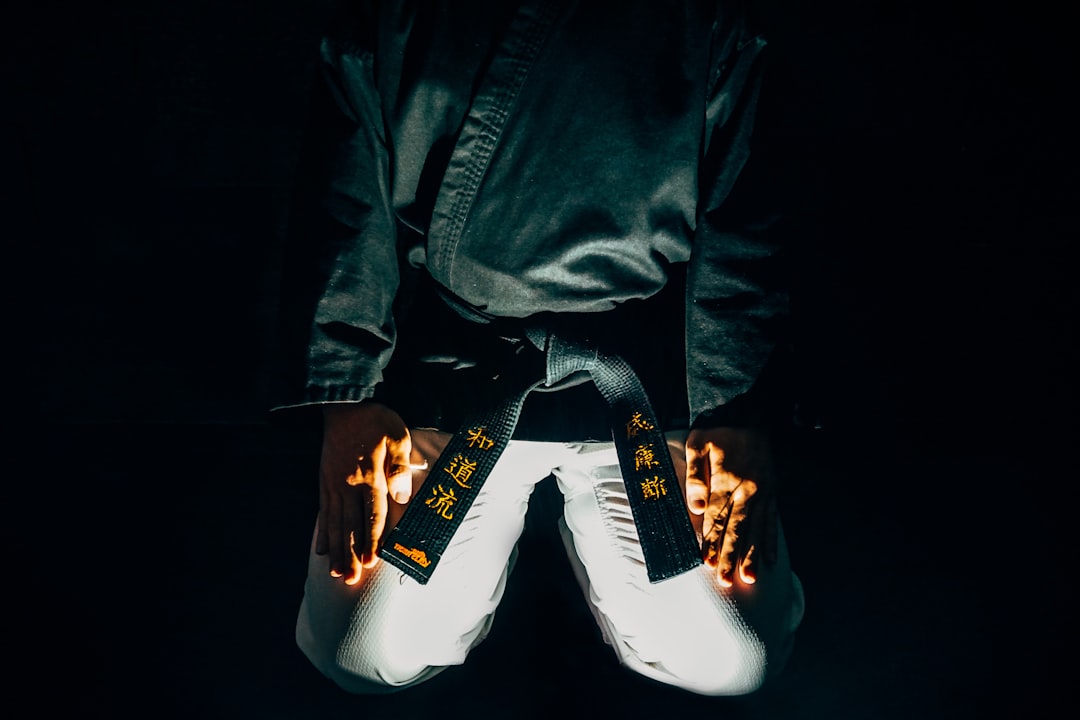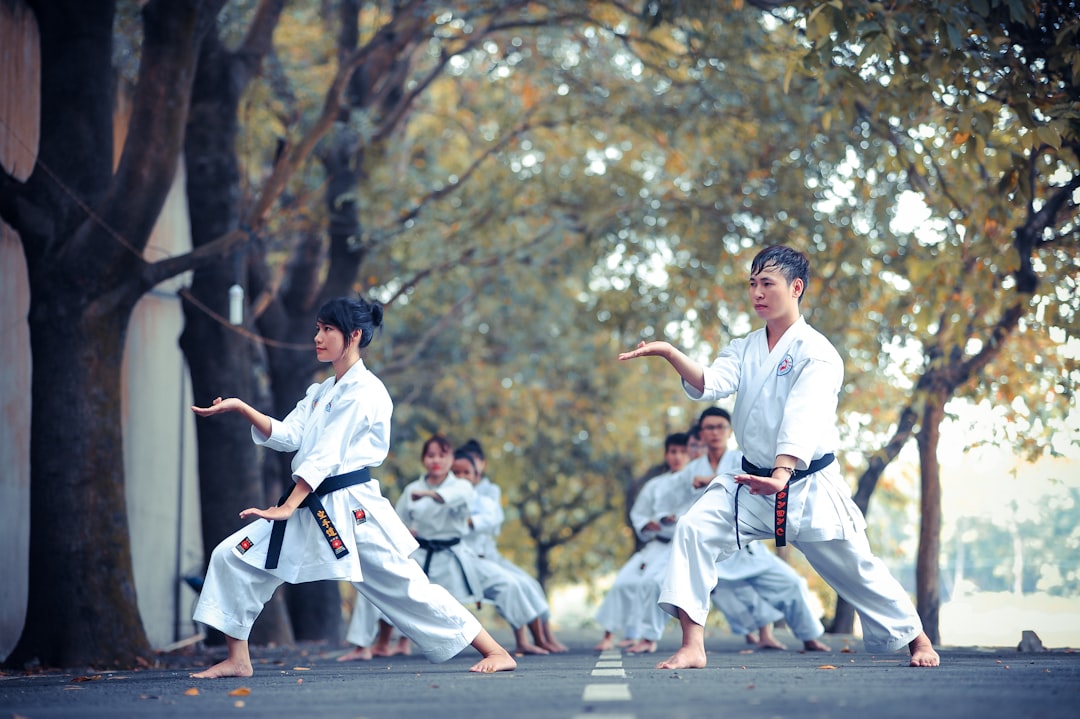Choosing the right karate uniforms and protective gear is crucial for both enhancing performance and ensuring safety during training. A high-quality keikogi, or karate uniform, should offer comfort, breathability, and mobility, allowing for full range of motion without sacrificing durability. It's important that the gi fits properly to avoid hindering movement or risking snags on equipment. Protective gear, including hand pads, body protectors, headgear, mouthguards, and appropriate footwear, is essential for sparring, minimizing injury risk. These items must be robust yet flexible to accommodate various karate techniques effectively. Practitioners at all levels should carefully select their equipment based on quality, durability, and how well they support the specific demands of their training regimen, adhering to both traditional karate standards and modern safety practices. Investing in specialized gear tailored to karate is key for anyone serious about advancing their skills and maintaining a safe training environment.
Embarking on a martial arts journey, especially in the discipline of karate, requires careful consideration of the equipment and attire that will support your practice. This article delves into the core essentials every karateka should possess, from the fundamental karate uniforms called ‘keikogi’ to advanced training tools for dedicated practitioners seeking to refine their skills. Whether you’re a beginner or an experienced martial artist, understanding the significance of quality gear and protective equipment is key to your progression in this esteemed art form. Join us as we outline the indispensable items that will aid you in your karate training, ensuring both effectiveness and safety during your practice.
- Essential Karate Equipment: A Guide to Gear and Attire
- The Significance of Quality Karate Uniforms and Protective Gear
- Advanced Karate Training Tools for Serious Practitioners
Essential Karate Equipment: A Guide to Gear and Attire

When stepping into the world of karate, selecting the right equipment is crucial for both training efficiency and safety. A fundamental piece of karate gear is the uniform, known as a gi. The gi should be comfortable, allowing you to move freely while providing the necessary coverage during practice and competitions. Typically, these are made of cotton or a cotton blend, offering durability and breathability, which is essential for maintaining comfort during intense training sessions. Does the material of the gi make a difference in your performance? Absolutely; a well-made gi will not only last longer but also won’t hinder your movements on the mat. Additionally, the right fit is imperative; a gi that is too tight can restrict movement, while one that is too loose may catch on objects or people during practice. What other essential items are part of the karate gear? Protective equipment such as hand pads, body protectors, and headgear are important, especially when sparring, to minimize the risk of injury. Mouthguards are also a must-have to safeguard your teeth and gums during impact. Ensuring you have the proper footwear is equally vital; karate dojos often require flat-soled shoes or dedicated karate footgear designed to grip the floor effectively, providing stability and support for your ankles and feet.
The Significance of Quality Karate Uniforms and Protective Gear

When engaging in karate, selecting the right uniform is not merely a matter of adhering to tradition; it’s about ensuring comfort and mobility during practice and competition. High-quality karate uniforms, known as ‘keikogi,’ are designed to provide the necessary coverage and breathability while allowing practitioners to execute techniques with ease. Does the weight and fit of a keikogi impact performance? Absolutely. A well-fitted uniform allows for full range of motion without hindering movements like punches, kicks, or blocks. It also helps in understanding one’s posture and form. Moreover, durable material ensures the uniform withstands the rigors of regular use, maintaining its shape and integrity over time. In addition to the uniform, protective gear is essential for both safety and effectiveness in sparring. Padding on the hands, forearms, chest, and shins safeguards against injuries that can occur from strikes or kicks. Are protective measures integral to karate practice? They are indeed, as they protect both practitioners and their partners during training sessions. The right equipment not only minimizes the risk of injury but also encourages a safer learning environment where participants can train with confidence and focus on improving their skills.
Advanced Karate Training Tools for Serious Practitioners

For those dedicated practitioners aiming to advance their karate training, investing in specialized equipment can significantly enhance performance and technique. Among the essential advanced training tools are high-quality karate uniforms, which not only facilitate proper form but also provide the durability necessary for rigorous practice sessions. These uniforms, known as keikogi, are designed to allow for full range of motion, ensuring that the karateka can execute every movement with precision and without restriction. Additionally, padded target gear is crucial for practicing strikes effectively. Makiwara and focus mitts are also indispensable for honing one’s striking power and speed, as they offer a tangible surface to punch and a responsive aid for partners to use during drills. Advanced practitioners must also consider protective equipment, such as groin guards and shin pads, to safely engage in sparring and full-contact drills. All these tools are pivotal for the progression of a karateka’s skills and should be carefully selected based on quality and suitability for their specific training needs. Are the karate uniforms you are considering made with durable materials that will withstand repeated use? Do they conform to the standards set by traditional karate practices while offering the necessary flexibility? These questions are critical when selecting a keikogi, as it is both a garment and an integral part of a serious practitioner’s toolkit.
In wrapping up our exploration of the essential elements for effective karate practice, it’s clear that both novice and advanced practitioners benefit from the right equipment. Quality karate uniforms, designed to facilitate movement while providing durability, are key for comfort and performance. Additionally, protective gear ensures safety during sparring and training drills. For those looking to advance their skills, specialized training tools offer targeted enhancements to technique and strength. Whether you’re stepping onto the mat for the first time or honing your black belt abilities, the right karate equipment can make all the difference in your martial arts journey. Remember to invest in well-crafted uniforms and gear that meet the demands of this dynamic discipline, and your practice will thrive.
